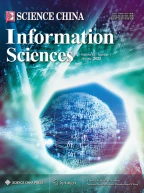Abstract
BSIM (Berkeley Short-Channel IGFET) became the first international industry standard model for simulation of MOS integrated circuits in 1997. The cumulative sales of ICs that have been designed with the aid of BSIM and produced for computing, communication, consumer, and industrial applications is estimated to be around 400 billion US dollars. From 0.35 μm CMOS to multi-gate FinFET, BSIM serves a wide range of technologies. Many China educated researchers have contributed to its success.
Similar content being viewed by others
References
Sheu B J, Scharfetter D L, Hu C, et al. A compact IGFET charge model. IEEE Trans Circ Syst, 1984, CAS-31: 745–748
Sheu B J, Scharfetter D L, Ko P K, et al. BSIM: Berkeley short-channel IGFET model for MOS transistors. IEEE J Solid-State Circ, 1987, 22(4): 558–566
Jeng M C, Ko P K, Hu C. A deep submicron MOSFET model for analog/digital circuit simulations. In: Tech Digest International Electron Devices Meeting (IEDM). San Francisco, CA., December 1988. 114–117
Toh K Y, Ko P K, Meyer R C. An engineering model for short-channel MOS devices. IEEE J Solid-State Circ, 1988, 23(4): 950–958
Huang J H, Liu Z H, Jeng M C, et al. A physical model for MOSFET output resistance. In: Tech Digest International Electron Devices Meeting, San Francisco, CA. Dec. 1992. 569–572
Huang J H, Liu Z H, Jeng M C, et al. BSIM3 Manual. Berkeley: University of California, Berkeley, 1993
Hu C, Tam S, Hsu F-C, et al. Hot-electron induced MOSFET degradation-model, monitor, improvement. IEEE Trans Elect Devices, 1985, ED-32: 375–385
Liu Z H, Hu C, Huang J H, et al. Threshold voltage model for deep-submicrometer MOSFET’s. IEEE Trans Elect Dev, 1993, 40(1): 86–95
Chan T Y, Chen J, Ko P K, et al. The impact of gate-induced drain leakage current on MOSFET scaling. In: Tech Digest of International Electron Devices Meeting (IEDM), Washington, D.C., Dec. 1987. 718–721
Hung K K, Ko P K, Hu C, et al. A unified model for the flicker noise in metal-oxide-semiconductor field-effect transistors. IEEE Trans Elect Dev, 1990, 37(3): 654–665
Fang P, Hung K K, Ko P K, et al. Characterizing a single hot-electron-induced trap in submicron MOSFET using random telegraph noise. In: Digest of Tech Papers of Symp on VLSI Technology, Honolulu, Hawaii, June 1990. 37–38
Hung K K, Ko P K, Hu C, et al. A physics-based MOSFET noise model for circuit simulators. IEEE Trans Elect Dev, 1990. 37(4): 1323–1333
Chen K, Wann H C, Dunster J, et al. MOSFET carrier mobility model based on gate oxide thickness, threshold and gate voltages. Solid-State Elect, 1996, 39(10): 1515–1518
Cheng Y, Chen K, Imai K, et al. A unified MOSFET channel charge model for device modeling in circuit simulation. IEEE Trans Comp-Aid Design Integ Circ Syst, 1998, 17(8): 641–644
Cheng Y, Jeng M C, Liu Z, et al. A physical and scalable I–V model in BSIM3v3 for analog/digital circuit simulation. IEEE Trans Elect Dev, 1997, 44(2): 277–287
Cheng Y, Hu C. MOSFET Modeling and Bsim3 User’s Guide. Kluwer: Academic Publishers, 1999. 449
Liu W, Jin X, Cao K M, et al. BSIM4.0 MOSFET Model—User’s Manual. Berkeley: University of California, Berkeley, 2000
Jin X, Ou J, Chen C, et al. An effective gate resistance model for CMOS RF and noise modeling. In: Electron Devices Meeting, 1998. IEDM, Dec 1998. 961–964
Ou J J, Jin X, Hu C, et al. Submicron CMOS thermal noise modeling from an RF perspective. VLSI Tech, 1999, 151–152
Liu W, Jin X, King Y, et al. An efficient and accurate compact model for thin-oxide-MOSFET intrinsic capacitance considering the finite charge layer thickness. IEEE Trans Elect Dev, 1999, 46(5): 1070–1072
Cao K M, Lee W C, Liu W, et al. BSIM4 gate leakage model including source-drain partition. IEDM, 2000
Cao K, Liu W, Jin X, et al. Modeling of pocket implanted MOSFETs for anomalous analog behavior. IEDM, 1999
Chan M, Su P, Wan H, et al. Modeling the floating-body effects of fully depleted, partially depleted, and body-grounded SOI MOSFETs. Solid-State Elect, 2004, 40(3): 969–978
Jin W, Liu W, Fung S K H, et al. SOI thermal impedance extraction methodology and its significance for circuit simulation. IEEE Trans Elect Dev, 2001, 730–736
Wan H, Su P, Fung S K H, et al. Modeling for FDSOI MOSFET and self heating effect on RF parameter extraction. NanoTech Workshop on Compact Model, 2002
Huang X, et al. Sub-50 nm FinFET: PMOS. IEDM, 1999, 67
Brews J R. A charge-sheet model of the MOSFET. SSE, 1978, 21(2): 345–355
Dunga M, et al. BSIM-MG: A versatile multi-gate FET model for mixed-signal design. In: VLSI Tech, 2007, 60–61
Author information
Authors and Affiliations
Corresponding author
Additional information
This paper is written to celebrate the first 50 years of the teaching careers of Prof. Y. Y. Wang and Prof. F. Q. Yang. The two BSIM research leaders, Chenming Hu and Ping Ko, have had long associations with Prof. Wang, Prof. Yang, and the Institute of Microelectronics, Peking University. Many former students and teachers of the Institute were major contributors to BSIM including the first three staff managers of the BSIM program from 1995–2005, Dr. Yuhua Cheng, Dr. Weidong Liu, and Dr. Xuemei Jane Xi.
Sponsored by SRC and MICRO. Data in Figure 4 are supplied by TI and TSMC
Rights and permissions
About this article
Cite this article
Hu, C. BSIM—making the first international standard MOSFET model. Sci. China Ser. F-Inf. Sci. 51, 765–773 (2008). https://doi.org/10.1007/s11432-008-0053-x
Received:
Accepted:
Published:
Issue Date:
DOI: https://doi.org/10.1007/s11432-008-0053-x
